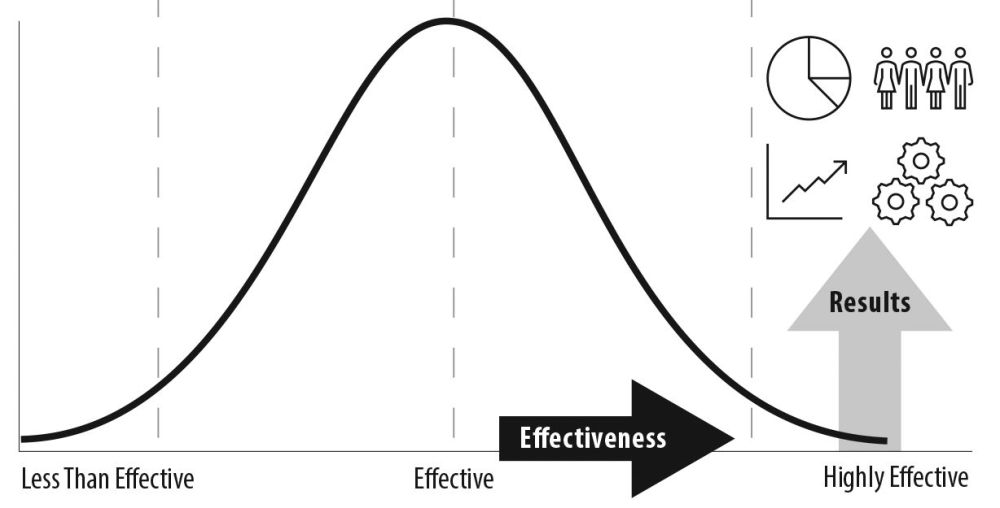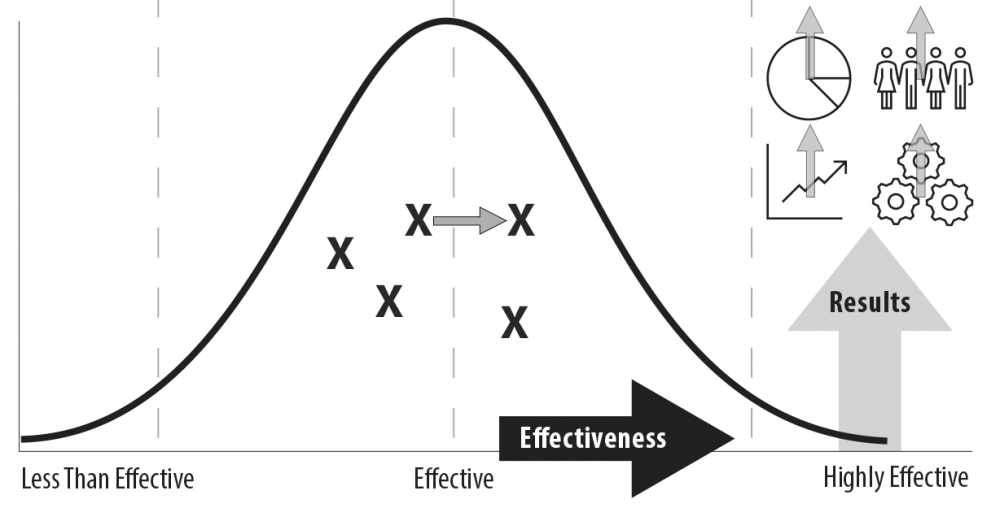How Leaders Become Great

Why is leadership an important concept for us to consider? The answer is likely obvious to those of you leading an organization or who are part of a company leadership team. Strong leadership generates quantifiable financial results—revenue growth, profitability, cash flow, customer satisfaction—and qualitative people results, like talent attraction & retention or employee engagement, not to mention your personal satisfaction as a leader.
If leadership has such tangible impact on organizations and people, the question becomes: what does great leadership look like? People often ask us what makes a good leader. I typically start by asking what criteria they use to determine someone is a great leader. The answers I hear include:
- inspirational,
- hard working,
- show financial wizardry, or
- marketing genius.
From our perspective, there is no such thing as a good or bad leader; it’s more about one’s degree of effectiveness.
Most leaders are effective. Effective leadership results in solid revenue gains, profits, and incremental growth. This is important to understand: effective is the norm. If the results you achieve meet expectations, that’s okay. To truly understand great leadership, we need to take a brief look at statistics—I promise it will be brief and painless. Statistically, every population (including leaders) falls into the middle of a bell curve. Remember, most leaders make decisions and demonstrate a degree of performance one would evaluate as effective—they are getting the job done.

No leader will last long if they consistently fall under the tail of less than effective. The other side of the curve is where we aspire to perform—always to be a highly effective leader who can impact profitability, growth, and meaningful change across their organizations. The more effective a leader is, the more likely their organizational results will improve.
Move the Mean and See Exponential Results
When we agree that leadership is an ever-developing skill defined by degrees of effectiveness, leaders can recognize a powerful message: your impact can improve daily. Leaders continually develop and refine their skills. What is important to recognize is how the most incremental improvements to one’s leadership capabilities will exponentially impact results across your organization. If a leader Identifies a skill or capability that supports effective leadership (e.g., financial acumen, strategic thinking, being a team developer, operational savvy, etc.) and makes a concerted effort to strengthen that capability, what happens? As they improve a skill or capability, the higher the likelihood that their decisions and actions lead to better results.

In other words, they move the mean of their effectiveness and exponentially drive their results—greater financial gains, improved market position, more effective operations, and increased associate motivation and engagement.
How do you become a great leader?
It is all about moving the mean. Be bold and unafraid; look at yourself and assess your leadership capabilities. Where are you strong? What capabilities could be strengthened? Recognize that leadership is a skill that can be continuously improved and start the process of building your professional development. As you do, look at your results. You will see it almost immediately. Remember: move the mean and recognize exponential results. That’s the challenge (and the formula) for growing into a great leader.
- Associate Development (1)
- Business News (1)
- Business Planning (3)
- Business Resources (2)
- Communication (3)
- Decision-Making (3)
- E.I. (1)
- Finance & Accounting (1)
- High-Performing Teams (1)
- Inspiration (1)
- Management (3)
- Operations (1)
- People Skills (1)
- Self-Awareness (2)
- Small Business (3)
- Strategy (3)
- Business Growth (6)
- Finance (3)
- From 50 to 500 (3)
- General (2)
- Leadership (8)
Too Fast or Too Slow – Growth Can Still Cause the Same Cash-Flow Problem
Over the past few months, I’ve come across two companies facing serious cash-flow challenges but for completely opposite reasons. As I’ve discussed in previous blogs, cash flow is one of the most common challenges for growing companies. When you read the cases you may think they have cash issues because they are fairly new and small in size. However, in both of these examples the companies have been around for a while and both are in the hundreds with regards to number of employees.
Strategic Thinking in Your Decision Making
Businesspeople in all sizes of growing companies, routinely encounter tough decisions, challenging problems, and complicated situations. In an ideal world, leaders could rely on highly structured frameworks supported by rich datasets to point them toward great choices.
Beyond a Feeling: Emotional Intelligence Is Not the Holy Grail of Assessment
Emotional intelligence (EI) is a term thrown around often, especially in professional development. We’re told that those with high EI are better leaders, better communicators, and, overall, more successful. But is there actual science behind the hype?
10 Tips to Scaling a Small/Midsized Business
Hardly anyone focuses on the challenges you have as a leader of a small business that is established and growing. It really doesn’t matter if you are a leader with around 20 employees and growing or 100 employees and growing. After working with tens of thousands of leaders over the last 25 years, research, and my own experience growing a business to around $100M, I have these 10 tips for scaling your small to midsized business.






